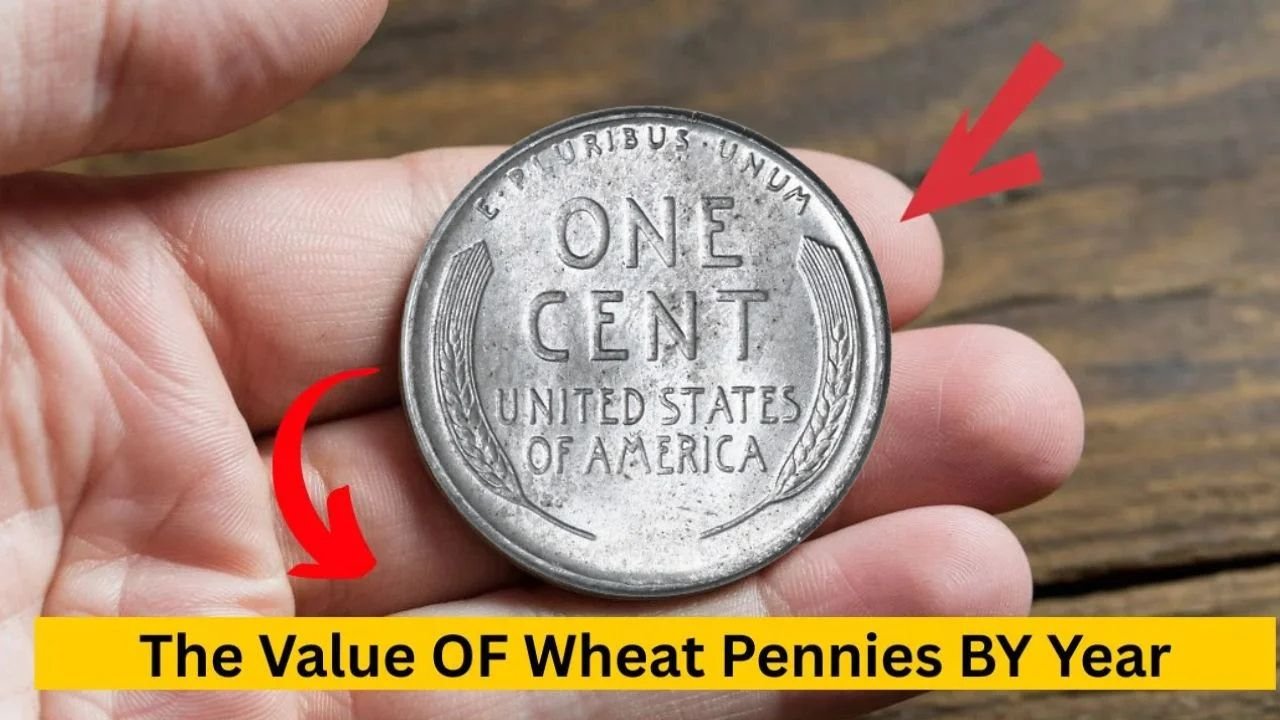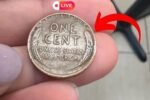The Value of Wheat Pennies by Year: Wheat pennies, also known as Lincoln Wheat Cents, are tiny pieces of American history that have become a favorite among coin collectors. First introduced in 1909, these pennies feature Abraham Lincoln on the front and two wheat stalks on the back—symbolizing prosperity and unity. Although they were replaced by the Lincoln Memorial design in 1959, wheat pennies continue to hold great value, especially for collectors who appreciate their story and rarity. Let’s explore how their worth changes by year and what makes some of them so special.
The Birth of the Wheat Penny (1909–1919)
The very first wheat pennies were struck in 1909 to celebrate the 100th anniversary of Abraham Lincoln’s birth. The designer, Victor D. Brenner, included his initials “VDB” on the reverse side of some coins. However, this small detail led to controversy, as many people thought the initials were too large. As a result, the U.S. Mint quickly removed them, making the 1909-S VDB penny one of the most sought-after coins in the entire series. Collectors can pay thousands of dollars for one in good condition.
During the 1910s, production expanded to three mints—Philadelphia (no mint mark), Denver (D), and San Francisco (S). Early wheat pennies from this decade are often valuable because they were made in smaller numbers and many were lost or worn down over time. Coins like the 1914-D penny are especially rare, and high-grade versions can sell for several thousand dollars.
The Roaring Twenties Wheat Pennies (1920–1929)
As the U.S. entered the 1920s, the economy grew, and more coins were produced. This meant that most wheat pennies from this period are easier to find today. However, some years stand out. The 1922 penny, for example, was only minted in Denver, and a famous error version known as the “No D” penny—where the mint mark is missing—can be worth hundreds or even thousands depending on its condition.
Overall, wheat pennies from the 1920s are still collectible, especially those with clear dates and sharp details. While common coins from this decade might only be worth a few cents, rare varieties or well-preserved examples can fetch much higher prices.
The Depression Era Pennies (1930–1939)
The Great Depression affected nearly every part of American life, including coin production. Wheat pennies from the 1930s are still relatively common but hold special meaning because they represent a challenging period in history. The 1931-S penny is one of the key coins from this decade. With a low mintage of just over 800,000, it remains a prized piece for collectors.
Pennies from this era are often found in circulation with heavy wear, but collectors love finding one in mint condition. The sharp wheat design and deep reddish-brown color of an uncirculated 1930s penny can add beauty and value to any collection.
Wartime Changes and the Steel Penny (1940–1949)
World War II brought big changes to the U.S. Mint. In 1943, copper was needed for ammunition and military supplies, so the Mint made pennies from zinc-coated steel instead. These 1943 steel pennies are among the most famous coins ever produced. They look silver, not copper, and are magnetic. While most are common and worth only a few dollars, a few rare 1943 copper pennies were made by mistake and can be worth over $100,000!
After the war, the Mint returned to copper coins. Wheat pennies from the late 1940s are easy to find but still fun to collect. They remind us of a time when even small coins played a role in supporting the war effort.
The Final Years of the Wheat Design (1950–1958)
The 1950s marked the end of the Wheat Penny era. During these years, production increased significantly, and billions of coins were made. This means that most 1950s wheat pennies are worth only a few cents today unless they are in exceptional condition or have minting errors.
However, the design remained beloved by the public, and these final coins serve as a bridge between the old and new. In 1959, the back of the penny was redesigned to feature the Lincoln Memorial, ending the 50-year run of the wheat design.
What Makes a Wheat Penny Valuable?
The value of a wheat penny depends on several factors: its year, mint mark, condition, and rarity. Coins with low mintages or unique errors are worth more. Collectors also pay attention to the color of the coin—ranging from brown to red-brown to full red. The brighter the color and better the detail, the higher the value.
Even if you find a common wheat penny in your pocket change, it’s still a piece of history. Many people start collecting them for fun and quickly realize how fascinating these small coins can be.
Frequently Asked Questions (FAQs)
What is the rarest wheat penny?
The 1909-S VDB is often considered the rarest and most valuable regular-issue wheat penny.
How can I tell if my wheat penny is valuable?
Check the year, mint mark, and condition. If it’s a rare date like 1914-D or has an error, it could be worth a lot.
Are 1943 steel pennies worth anything?
Most are worth a few dollars, but the 1943 copper version is extremely valuable—sometimes worth over $100,000.
Can I still find wheat pennies in circulation?
It’s rare, but possible! Many people occasionally discover them in old coin jars or rolls from banks.
Why are they called wheat pennies?
Because the reverse side of the coin features two wheat stalks, symbolizing growth and prosperity.




